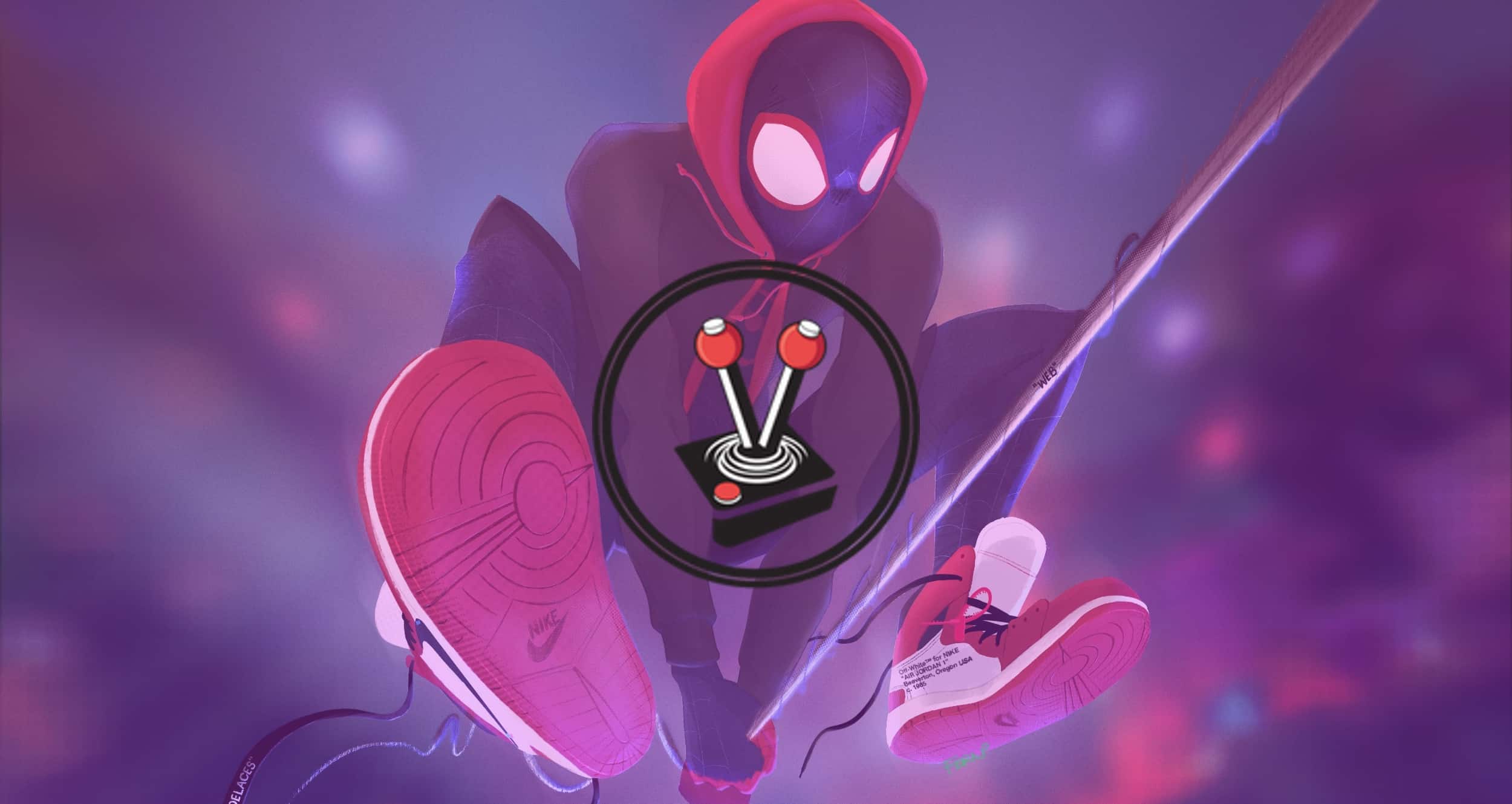Spider-Man movies are slowly becoming a dime a dozen. Similarly, the sheer idea of yet another new Peter Parker has become somewhat of a meme. After all, there are upwards of three live-action adaptations of the famous character, a variety of comic-book variations and a myriad of video game versions to boot. The latest foray into expanding the universe of Marvel’s popular websligner is the animated film, Spider-Man: Into the Spider-Verse. A film that tackles the infinite versions of the character head-on by introducing an entire set of heroes to the big screen; and it does so spectacularly well.
Spider-Man: Into the Spider-Verse is very much a story about Miles Morales, voiced by the talented Shameik Moore. It follows the young teen in a world where Peter Parker has been Spider-Man for ten years. Spider-Man merchandise can be bought from all stores and street vendors, and comic books, cereal, and even television shows have been created about the New York superhero. In this world, Miles Morales is a normal boy with typical parents and a standard teenage life. Everything is quite normal. Until, of course, his world is thrown a curve ball when Kingpin and his lackeys destabilise multiple universes.
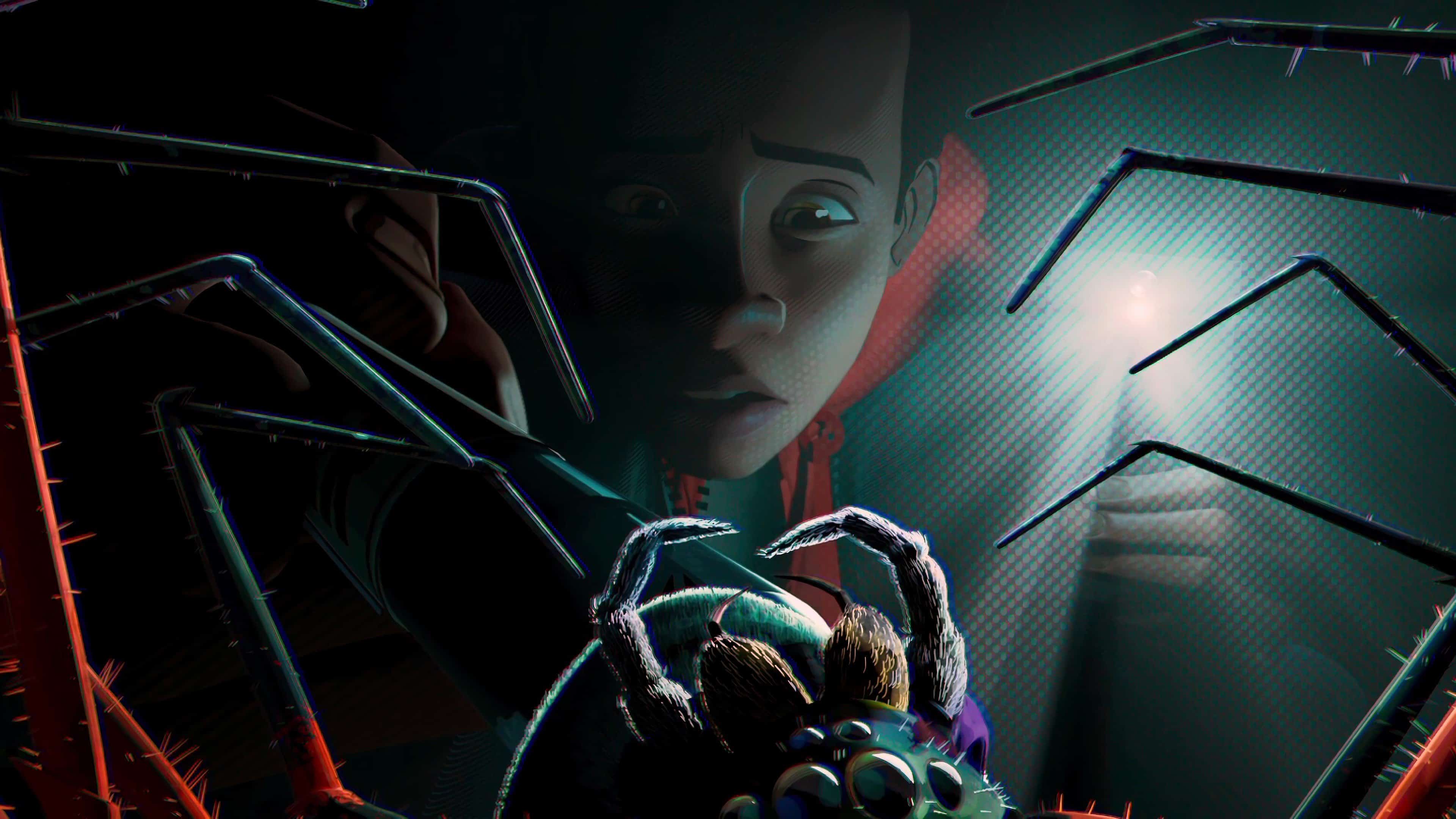
Every journey has a focal hero at its centre. Into the Spider-Verse has Miles Morales. His Spider-Man journey comes to a head when a destabilised spider crawls around in his clothing before biting him. Gross, I know. Before this, however, the film depicts how Miles feels pressured by his father — a respected “PDNY” (Police Department of New York) officer — into being “the best that he can be”. As a means of escaping his pressured reality, Miles visits his uncle, Aaron Davis, and the two go on a little adventure.
Miles is a talented artist, and his uncle enjoys allowing him to express himself. As such, Aaron guides him to an underground and deserted subway tunnel. Here, whilst expressing his artistic talent, the spider bites him. This scene is actually pretty funny. It depicts the spider bite in detail, showing how the venom spreads into his veins and how his DNA is being changed at the molecular level. I do not know about you, but if a spider bit me, I would freak out. Miles does the exact opposite, and simply shrugs the bite off in comedic fashion before walking away. This comedy is spread far and wide throughout the film at regular intervals, and I love the movie for it.
The events that follow are heart-wrenching, to say the least. Not only must Miles now cope with his strange new abilities, but he must also deal with devastating loss, a promise he made, and the increased pressure of the expectations of those he loves. Enter Spider-Man. Well, another Spider-Man. Miles unintentionally shocks the living daylights out of him (what an amusing and an incredibly well thought-out way to introduce a new ability) and in turn, must get himself and the unconscious body of this ‘other’ Spider-Man away from prying eyes. Here, Miles learns about the effects of Kingpin’s machine, and how multiple universes have started to collide with one another. As you might expect, this means that even more Spider-people have entered the fray.
Peter B. Parker is the first to arrive in the narrative. However, the film soon introduces Gwen Stacy into the fold. Together, Spider-Gwen (Hailee Steinfeld), Peter (Jake Jonhson) and Miles must seek refuge at a familiar residence, where they run into another three unlikely Spider-people: black-and-white, charming and classic, Spider-Man Noir (Nicolas Cage), the cartoon-inspired and totally wacky Spider-Ham (John Mulaney), and the most surprising addition, an anime-inspired, futuristic Peni Parker (Kimiko Glenn), and her loveable SP//dr suit, powered by her radioactive Spider companion.
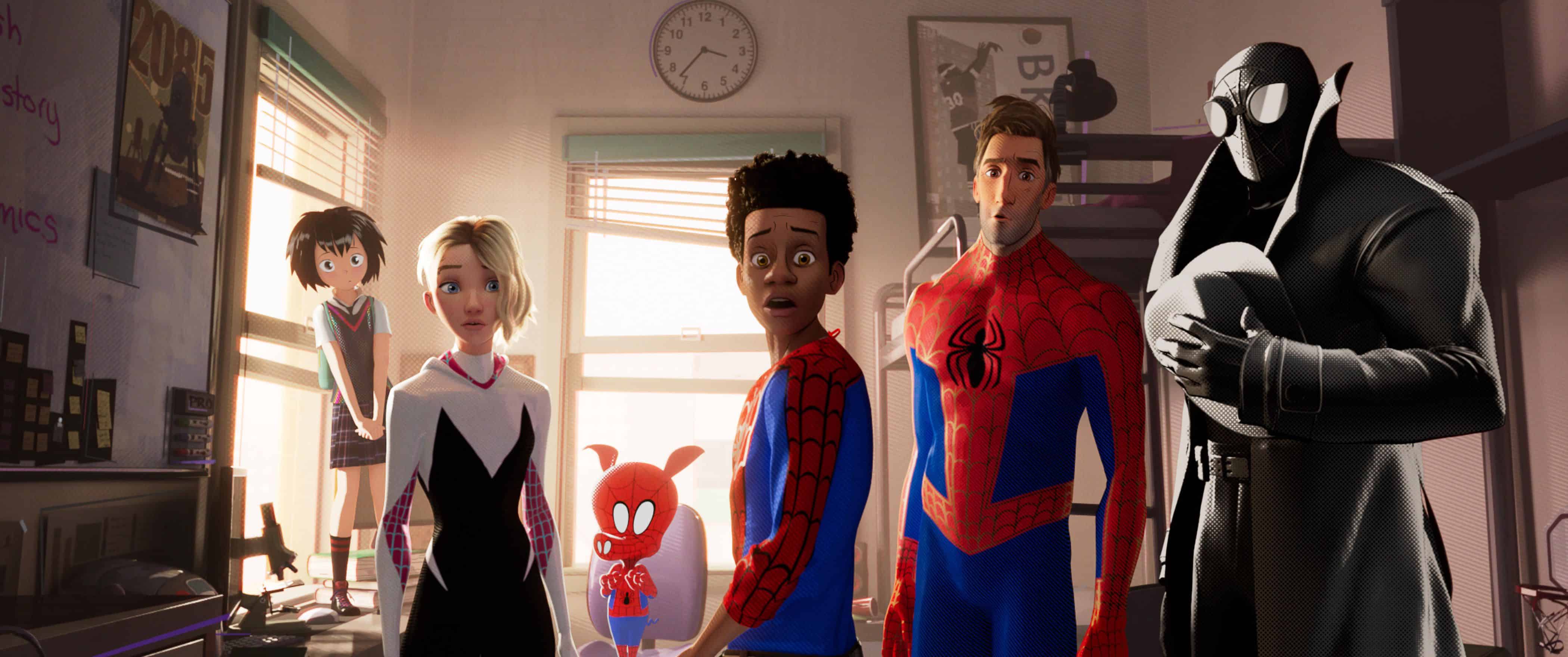
As expected from a movie where the limelight is shared between multiple heroes, Into the Spider-Verse slowly lets viewers get used to each one in order. Peter B. Parker and Miles share the most screen time, with Gwen Stacy coming in at a close second. These three characters make the bulk of the character development throughout the film, with Parker personifying the jaded mentor and Stacy the role of maybe-but-not-really-love-interest-but-I-totally-ship-them friend.
When it comes to their backstories and how they came to Miles’ earth, the film does this incredible thing where the camera zooms out, a comic book about the respective character is slapped onto a table, and it zooms back in. The film then tells a similar, yet also a very different tale, of how the character in question ended up in Miles’ universe. Before flipping the narrative back to Miles. This transition is an excellent and charming way of dealing with character backstory. Providing enough context for people who might not necessarily be into the added detail, but also giving those who are more than enough to be satisfied. The film does this three times: once for Miles, again for Peter, and lastly for Gwen. When the remaining Spider-verse heroes are introduced, the film comically starts off their backstories as expected, with Spider-Man Noir doing the brunt of the narration. However, it quickly, and hilariously, gets shut down when he realises that the viewer has (probably) seen ‘this’ story before.
What I particularly like about these comic book introductions is how each of them features actual comic book cover art. They also include all kinds of clever easter eggs based on previous Spider-Man films, games, cartoons, and even real-life comic books.
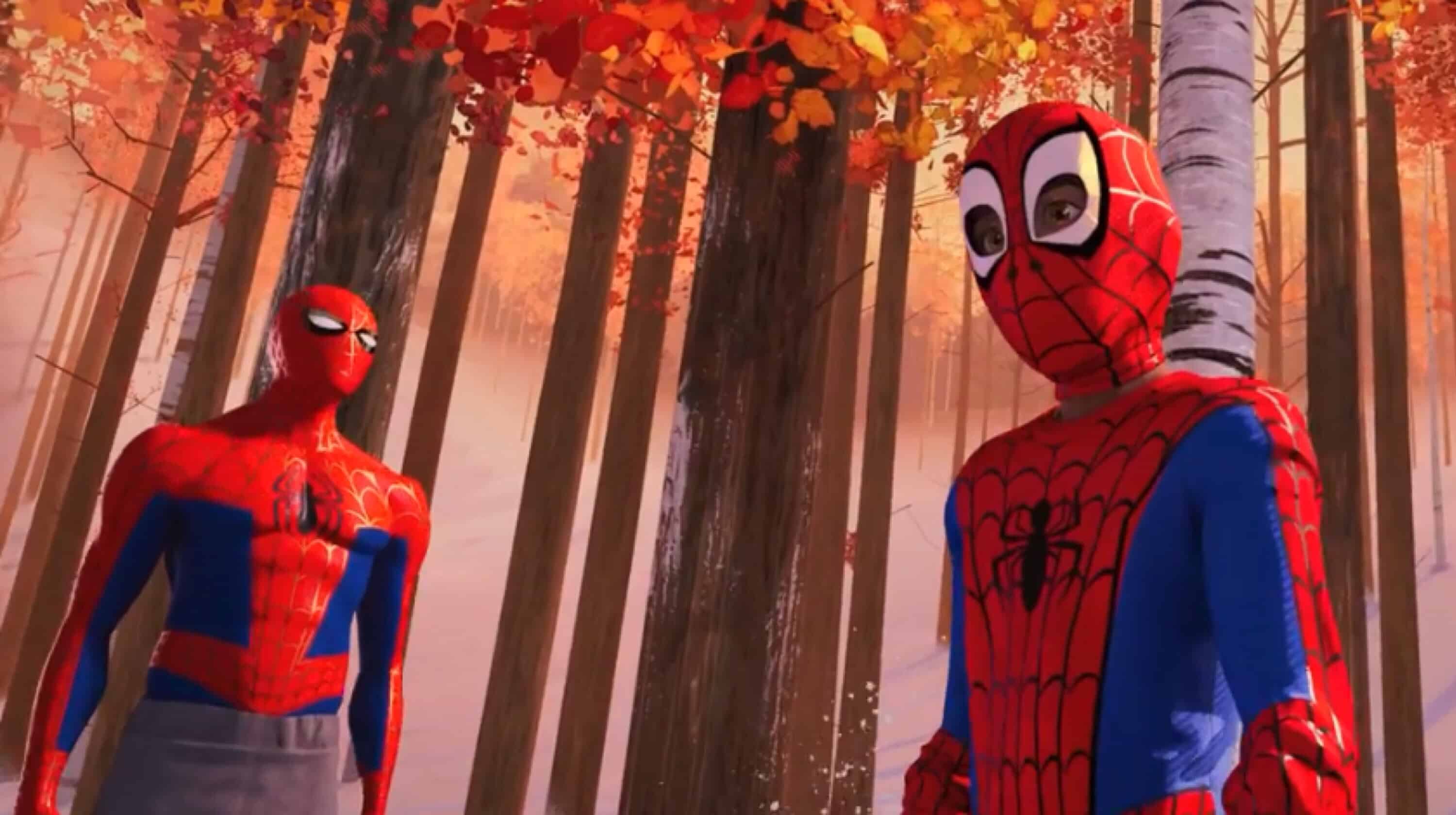
Beyond the main cast of heroes, the film also features a spate of villains. Kingpin (Liev Schreiber) is particularly menacing. What helps him achieve that status is how he is depicted on-screen: as a huge, hulking man not dissimilar to his appearances in the classic cartoons. Kingpin in Into the Spider-Verse, however, dons a pitch-black suit, and has a much darker and grittier aura than that of any other version I have ever seen depicted outside of the comic books. Even the way he is introduced is fear-inducing: a pitch-black screen, with only his face and his lapels showing. It is both comical and frightening at the same time.
Other villains include Green Goblin, Prowler and several more surprises, all of which are outstanding in their own rights as villains. In fact, I feel that the Voice Over (VO) casting in this film is second to none when it comes to animated adaptations. Nicolas Cage as Spider-Man Noir was an excellent fit, for instance, while Jake Johnson’s portrayal of an older, much more jaded, Peter Parker fit beautifully with what was shown on-screen. Similarly, Steinfeld’s Gwen Stacy embodied the strong female lead persona; while Moore’s voice acting fits perfectly with a young, coming-of-age superhero who still needs to find his place in the world.
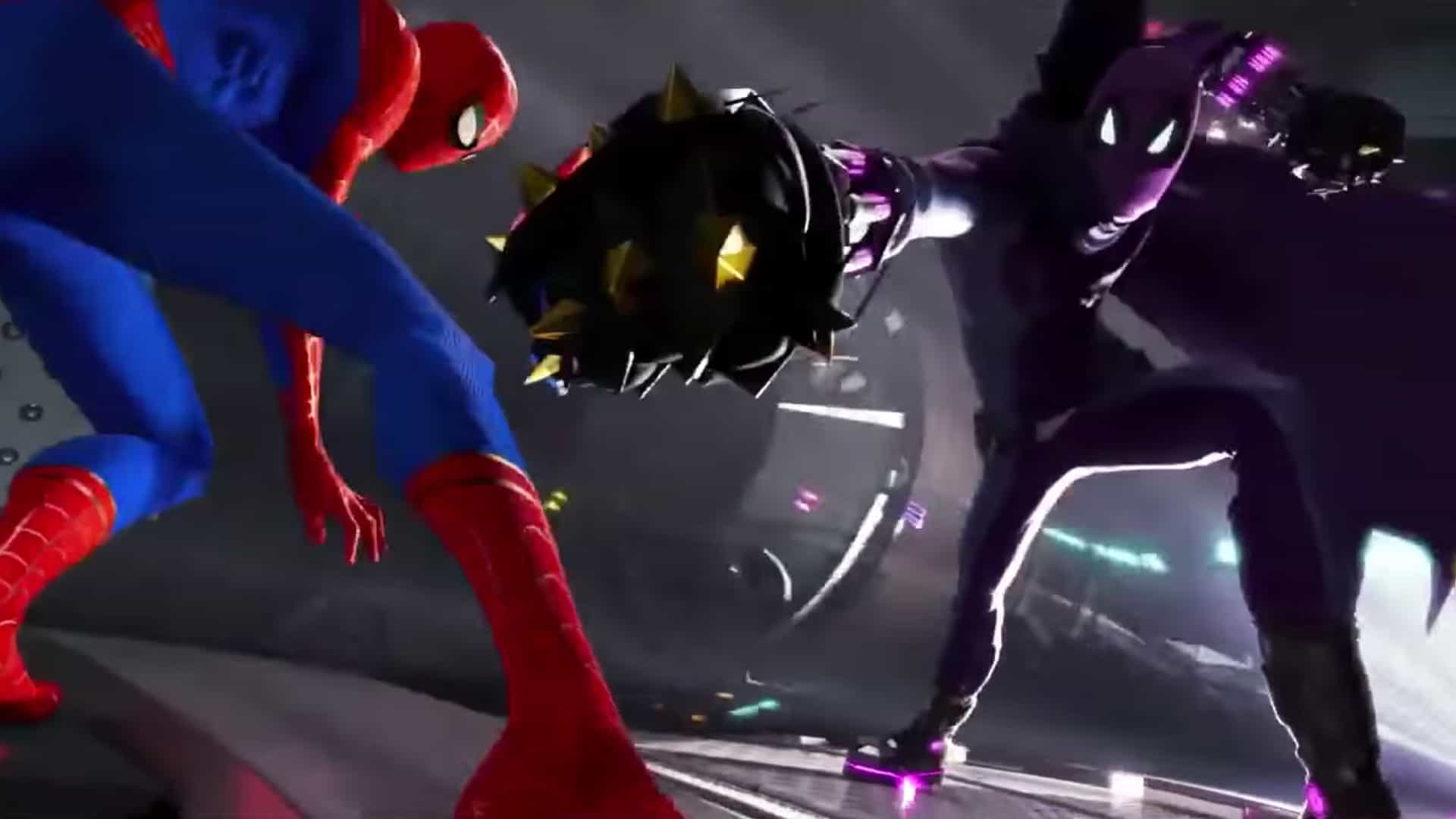
Of course, good voice over work is nothing without enjoyable graphics and a believable world. Thankfully Spider-Man: Into the Spider-Verse delivers without fault. The world shown in this film is nothing new: it features the standard New York cityscape, with the usual skyline, car-filled streets, and seemingly overcrowded population count. What is incredible, however, is the way it is all depicted.
The world of Spider-Man: Into the Spider-Verse is crafted beautifully. Mixed media governs the aesthetic of the film. Hashed drawings making up the bulk of what you see, with flat 2D drawings filling in for explosions and fire, while smoke, clouds and other particle-heavy effects are rendered in 3D to create depth. Most characters are drawn and lined like comic book drawings. However, the use of clever shading and plays on shadow and light, including blurred out backgrounds, helps to effectively create a focus effect that looks utterly superb. Many scenes also feature a faux 3D or double-frame effect that essentially creates an artificial motion blur (which also doubles as a depth focus), unlike anything I have ever seen. Everything about the film is stellar. Hans, in particular, thinks that the movie is made specifically with 3D in mind. Many of the effects mentioned above would work incredibly well when real-world 3D technology also comes into play. Although Vamers only had the courtesy of viewing this pre-release version of the film in 2D, I feel that it did not hamper how brilliant the visuals are – and they really are superb.
From a beautifully crafted world, through to incredible characters and amazing narratives, the movie also features one more memorable aspect: a soundtrack that not only fits the tone of the movie, but the overall feel of the world it is based in, and the aesthetic it features. Not long ago, Sunflower, by Post Malone and Swae Lee, hit the airwaves. As a fan of hip-hop and pop beats (and the Spider-Man persona), I immediately fell in love. Colour me surprised, however, when I found out how much those around me also loved the soundtrack!
Daniel Pemberton composed most of the orchestral tracks featured throughout the film, and he did an incredible job. While I cannot pin point a single favourite track (since it will release on 14 December alongside the film), I will say that the overture is one I will not soon forget. The overall theme of the movie not only hearkens back to other Spider-Man adaptations, but it also manages to stand on its own. Effectively giving the film its very own identity. Pemberton’s incredible work, together with hits such as the aforementioned Sunflower, Nicki Minaj’s Queen, and a few others, complements the world of Miles Morales perfectly.
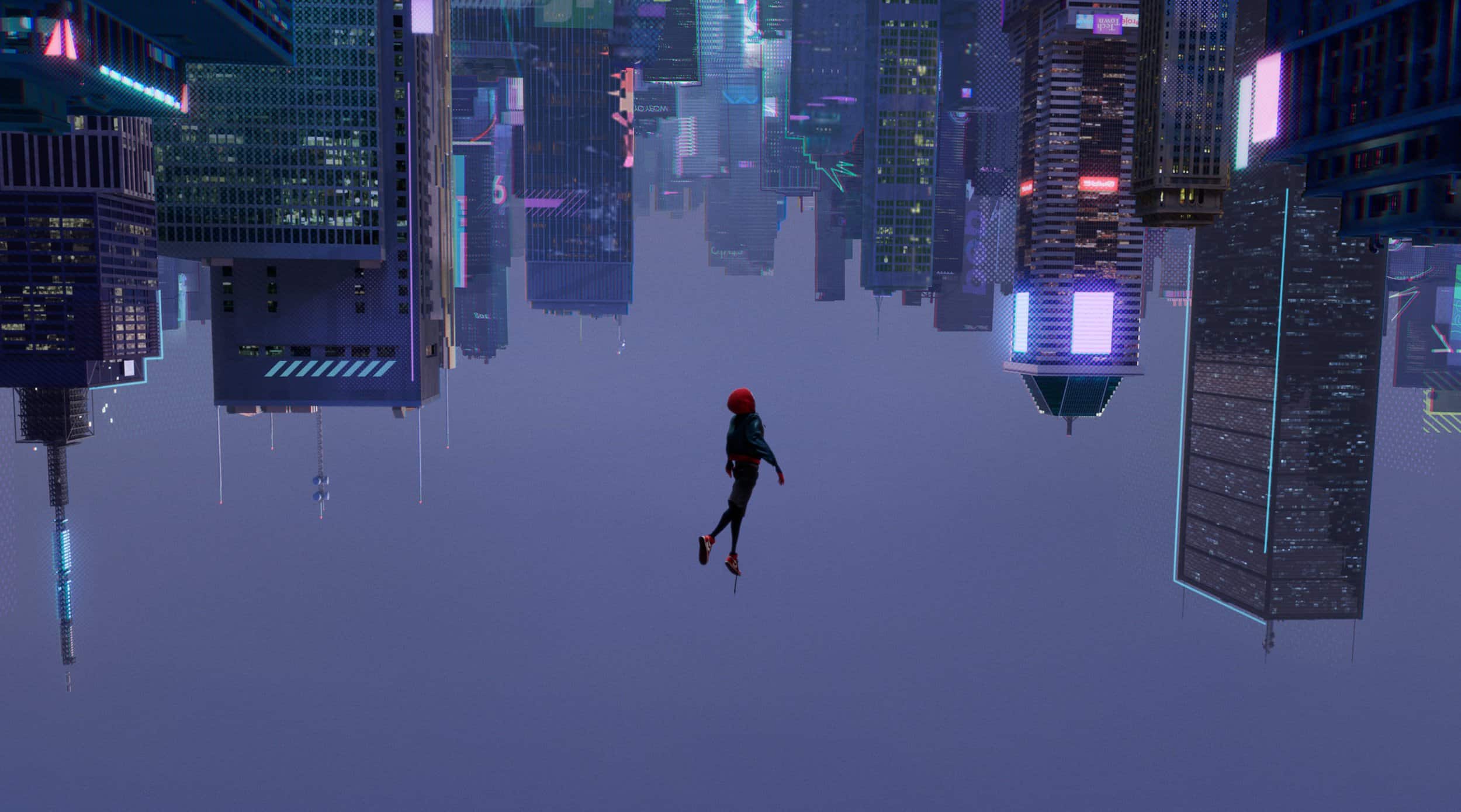
Spider-Man: Into the Spider-Verse encapsulates the perfect Spider-Man story: a coming-of-age tale where friendship, bravery and heroism prevail above all else. The characters in the movie are strong and stand apart as individuals who, together, can bring the most challenging of villains to their knees. The film looks visually stunning with mixed media aesthetics that will please even the most discerning of viewers. It also features a beautifully fitting soundtrack, both licensed and orchestral. The film is perfect. In every sense of the word.
Junior Editor at Vamers. From Superman to Ironman; Bill Rizer to Sam Fisher and everything in-between, Edward loves it all. He is a Bachelor of Arts student and English Major specialising in Language and Literature. He is an avid writer and casual social networker with a flare for all things tech related.

